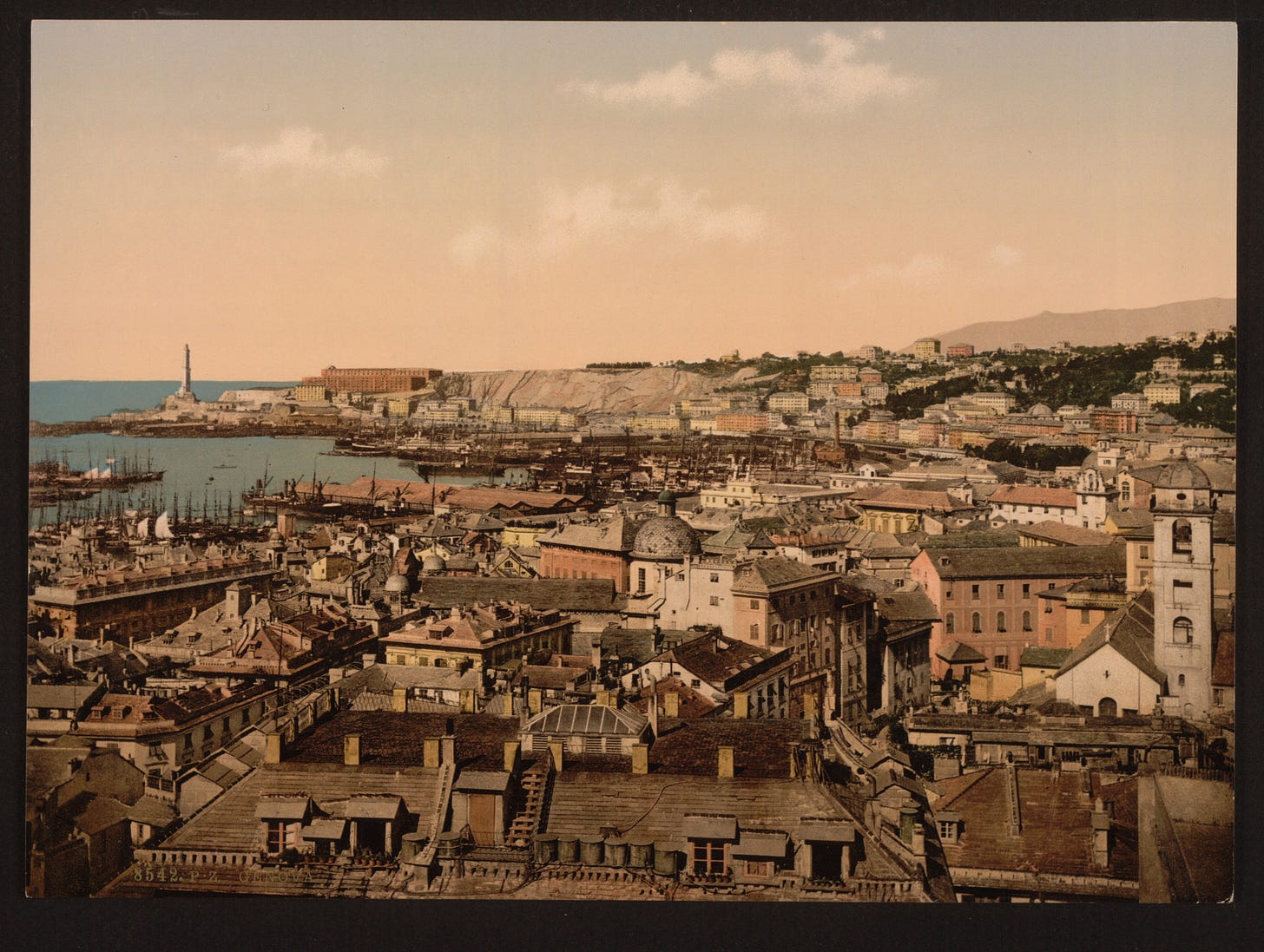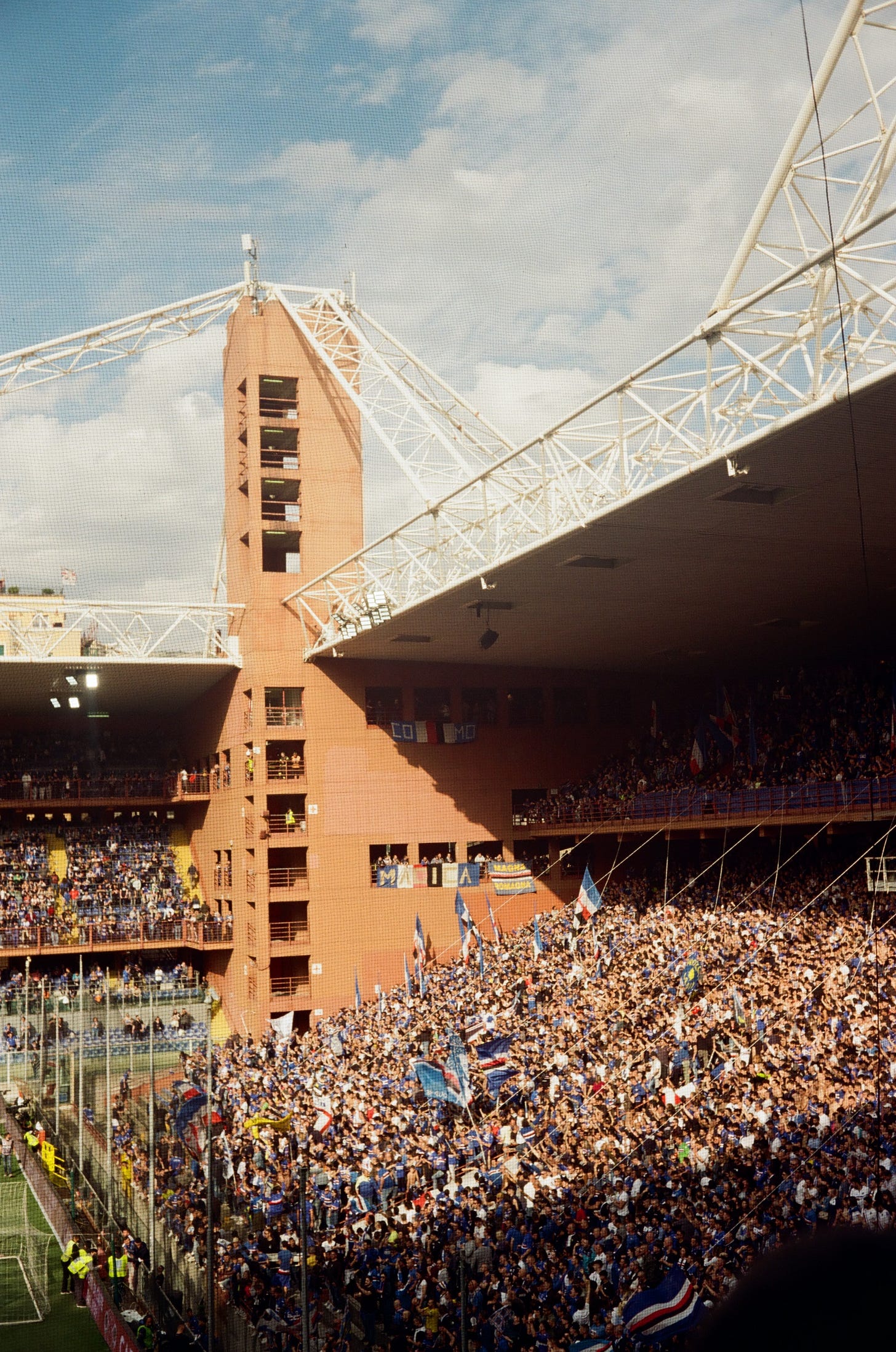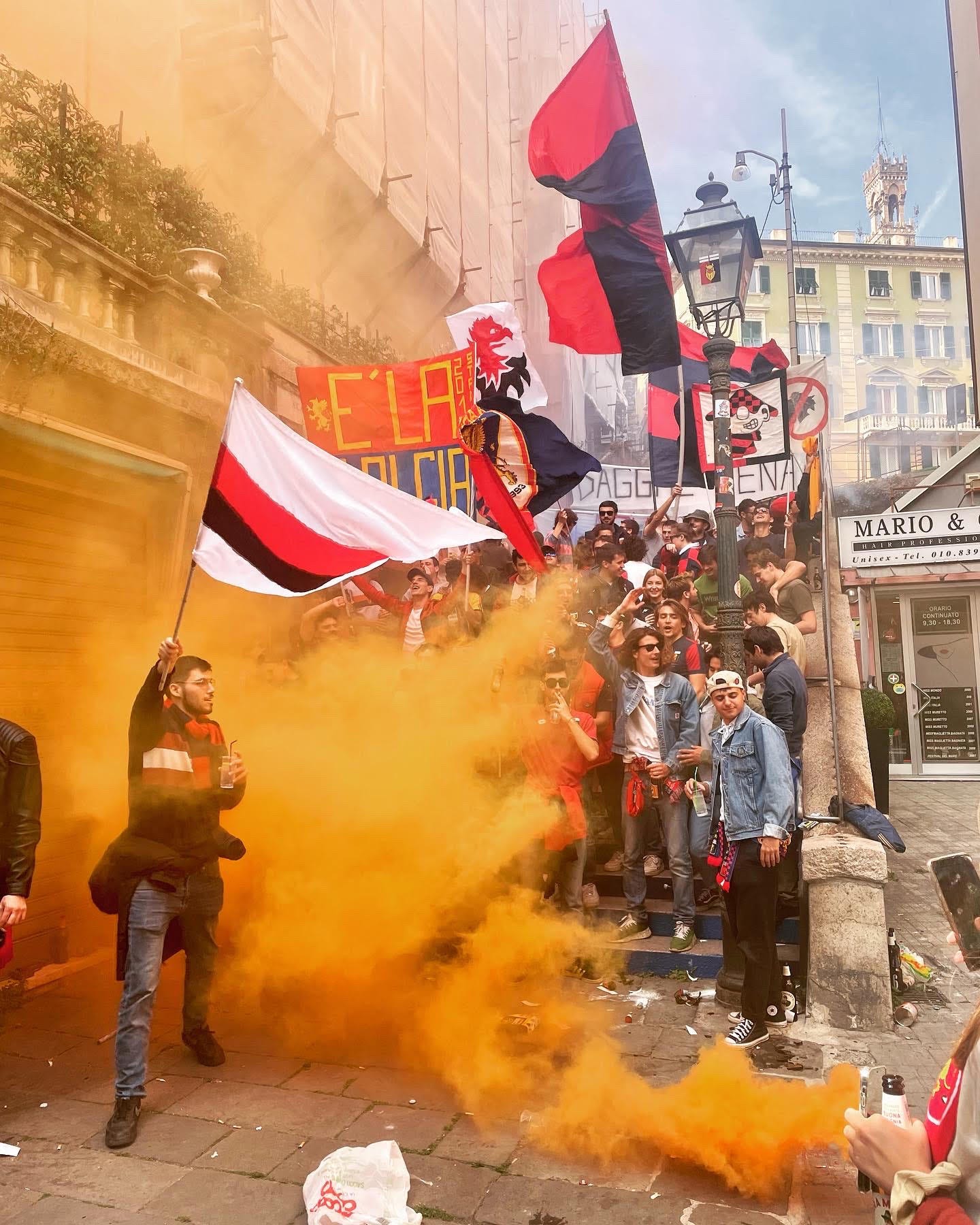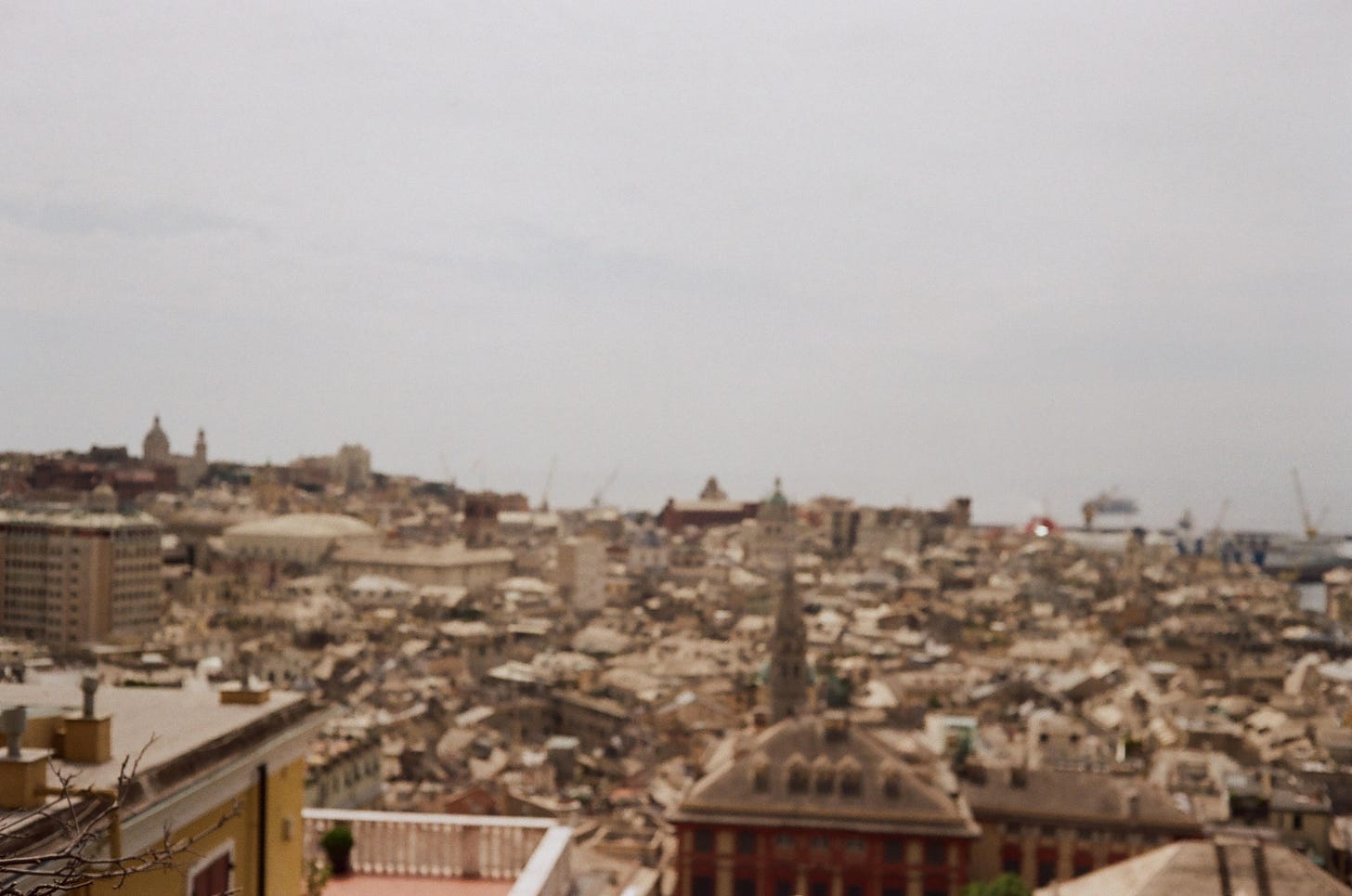Derby alla Genovese: A weekend in Genoa
Jack Martin takes us for an immersive weekend in the maritime city to watch Genoa CFC play Sampdoria.
In 1844, Charles Dickens spent a year travelling around Italy, an experience which culminated in his 1846 work, A Postcard from Italy. His first view of the boot-like peninsula was of Genoa harbour, with “its splendid amphitheatre, terrace rising above terrace, garden above garden, palace above palace, height upon height,” as it sprawled between the azure coasts and vertiginous mountains of Liguria. For centuries, Genoa’s harbour was the crossing point between Europe and the Mediterranean, accumulating such vast power that England would steal its red and white flag.
Other Genoese achievements include capturing Constantinople in 1261, pesto alla genovese and Christopher Columbus. Genoa’s laughably small airport – sandwiched between Maersk shipping containers and the highway north to the glamour of Sanremo – is named after him. Unlike many Italian cities, who were engaged in internecine displays of campanilismo – a parochial belief in your town’s superiority– Genoa’s maritime situ meant it was remarkably outward looking. Genoa is also the birthplace of football in Italy, and the game spread like wildfire after English sailors were spied engaging in a kick around down by the docks. It was for this reason, specifically the top flight derby between both Genoese teams: Genoa Cricket & Football Club – belying its English origins – and Sampdoria, that I had to come.
Like Dickens, the ascension of the city as it clings onto the hillsides before they drop off into the sea – strapiombo sul mare – provided my first takeaway of the city. Unlike Dickens, I was descending on the city from the summit peaks via a train from Turin. At first, this journey is unremarkable. Beyond Turin’s remarkable baroque Porta Nuova station, the landscape is flat, soporifically so, as we traverse through Asti, a vintner’s haven, and foggy Alessandria. But then, all of a sudden, the tunnels start and the train careers through the mountains, offering glimpses of the city laid out in fingers below. The sea slowly becomes visible and then disappears as Genoa’s monumental Piazza Principe station comes into view.

Piazza Principe is a vast cacophony of taxis, Vespas and airport buses, which creates a particularly southern Italian freneticism amplified by the relentless glare of the sun. Cross the piazza, which gives the station its name, go down a slight incline and you’ll find the beginning of Genoa’s famous alleyways – or caruggi – Europe’s largest medieval town. But this is not Florence: it reeks of urine, graffiti is rife and the sun is blocked by the height of the confining buildings flanking the caruggi, creating a stifling microclimate. Yet, there is a total lack of pretence. Residents are living, rather than existing in the semi museum status of a city like Siena. A street-level building with an arch holds a branch of Carrefour, African immigrants sell trinkets and dour, unsmiling women bake fresh focaccia. Once you hit Via San Lorenzo, the streets get wider and tourists emerge, as does the black-and-white striped Cathedral, which on this sunny May day is hidden behind scaffolding. Like the rest of Genoa, it is slightly blemished, and therefore holds a particularly insouciant attractiveness.
Sunday is the day of the derby, known as the derby della lanterna after the lighthouse that sits on Genoa’s quayside. Genoa, the older sibling of the two rival clubs, sports maroon and dark blue and is the oldest professional team in Italy. Founded in 1893, it is has won the Serie A nine times, the last of these coming in 1923-24. Despite investment from US private equity and the appointment of a shiny German manager, they lie deep in the relegation mire. Sampdoria, the younger upstart, is faring little better, but can secure survival in Italy’s top division. Regarded as the club of the suburbanites, Sampdoria have an epochal blue, white and red strip. In the late 80s and early 90s, they gained a legion of foreign fans due to the exploits of Roberto Mancini and the late Gianluca Vialli, who also went on to become a Chelsea legend before sadly passing away earlier this year.
While this derby isn’t known to have the ferocity of Rome’s derby della capitale or Milan’s derby della madonnina, it is unique. Both teams inhabit the Stadio Luigi Ferraris – known locally as the Marassi, after the surrounding neighbourhood. It sits squatly on the right bank of a dry riverbed which a battalion of wild boar call home. Unlike many Italian stadia, fans are close to the pitch, perhaps another English transplant. Each of the four stands are the same height, and four towers at each corner are connected by what appear to be huge metal girders, giving the appearance of four metal suspension bridges.
On our way to the Marassi, in a svelte neighbourhood overlooking downtown Genoa, we hear a commotion. The Genoa ultras are letting off orange and red flares between a small bar and an incline of steps. They shout, jump, and wave flags containing barbs such as “Doria Merda” (fuck Sampdoria), which also forms the basis of an incredibly catchy chant. Ordinary Genoese moonlight the bar and its surroundings but seem unfazed by the carnival atmosphere, as the thud of flares deafens all and smoke teems from canisters. The ultras are friendly, some eyeball us – a group of pallid British men – and as soon they’ve established we’re not Sampdoria fans, are keen to make friends and extol the virtues of Arsenal.
The streets wind back down another ridge towards the shoebox-like Marassi. Further flares can be seen lighting the route towards it. Booms from inside the stadium reverberate around the valley and it sounds more like a warzone than Mediterranean Italy. An ordered chaos exists both inside and outside the stadium, with fans of both teams trading insults and profanities. Others munch on boar sandwiches, which seems slightly ironic, given the boar inhabiting the neighbouring dry riverbed.
Inside, we stand with the Sampdoria fans, who are half-naked, smoking hash, and flying massive flags which swoop against the back of your head with surprising force. They feel and kick every ball, but most importantly remind the Genoa fans of how terrible their team is. This plays out on the pitch in a game which, atmosphere aside, can only be described as quite forgettable. Sampdoria score a scrappy goal and Genoa fans throw flares onto the turf in an attempt to halt proceedings.
But, at the last minute, it explodes. Genoa earn a penalty. If they score, they are closer to safety and will concurrently pull Sampdoria closer to relegation. However, their talisman, blonde-haired Neapolitan Domenico Criscito, who turned down a lucrative move to minted Toronto FC to help save Genoa, misses. The Sampdoria allied parts of the stadium are now covered in red and blue smoke, shouting abounds and topless men hug anyone and anything in sight. As we make our way out of the stadium and past a flotilla of speeding, horn-happy moped and taxi drivers, I relax.







